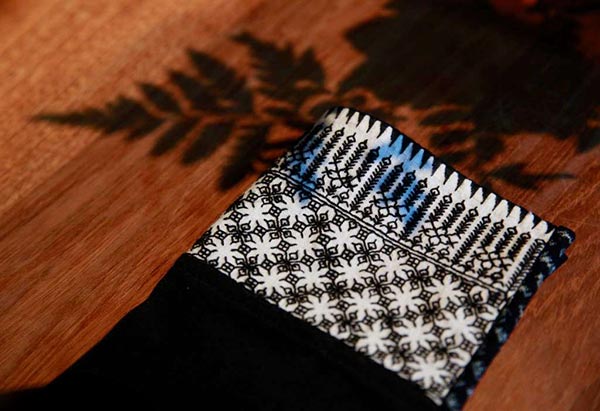Eco-fashion hot in Guizhou
 |
|
A dress designed by Sharon de Lyster. [Photo/Agencies] |
Landlocked Guizhou, 2,000 km from Beijing, has rich folk art traditions. More than a third of its 35 million residents are from ethnic groups including the Shui, Miao, Dong and other tribes known for their skills with batik, embroidery, silverwork, woodwork and paper cutting.
Those arts are under threat as growth picks up in the province best known for its stunning karst limestone hills and its fiery Moutai liquor. A new high-speed rail line is opening up previously isolated towns to outside visitors, while government planners are encouraging the tech industry to make Guizhou a center for big data.
The province reported 10.5 percent economic growth in the first half of 2016, third-fastest among the country's 31 regions.
The renaissance of traditional apparel workshops is partly driven by a backlash against so-called "fast fashion" seen in retail chains like Forever 21 and H&M, says Christina Dean, founder of Redress, a nongovernmental organization that promotes sustainability in the fashion industry. Similar trends are at play even in affluent Japan, which has rich textile and woodworking traditions of its own.
"By and large, the mainstream fashion industry has become so bland, it has become a polyester rag," says Dean. "So we are seeing more and more emerging brands really revive artisanal craftsmanship around the world."
















